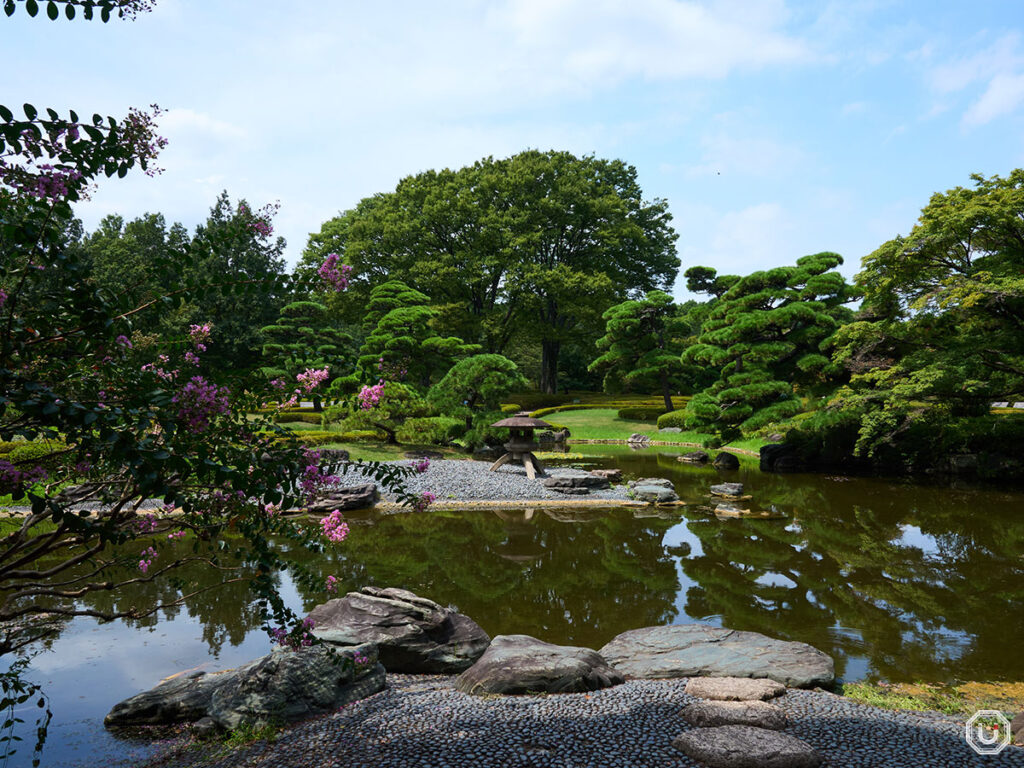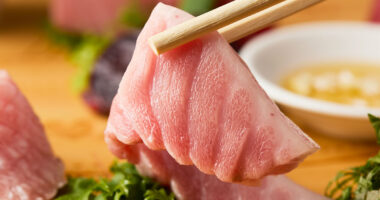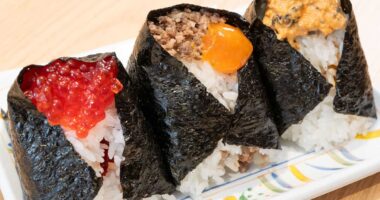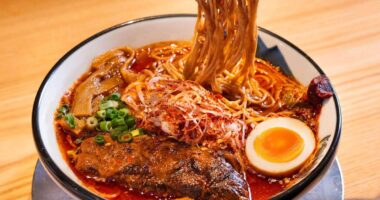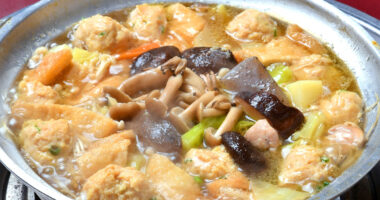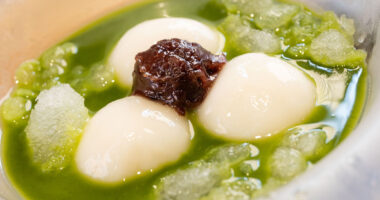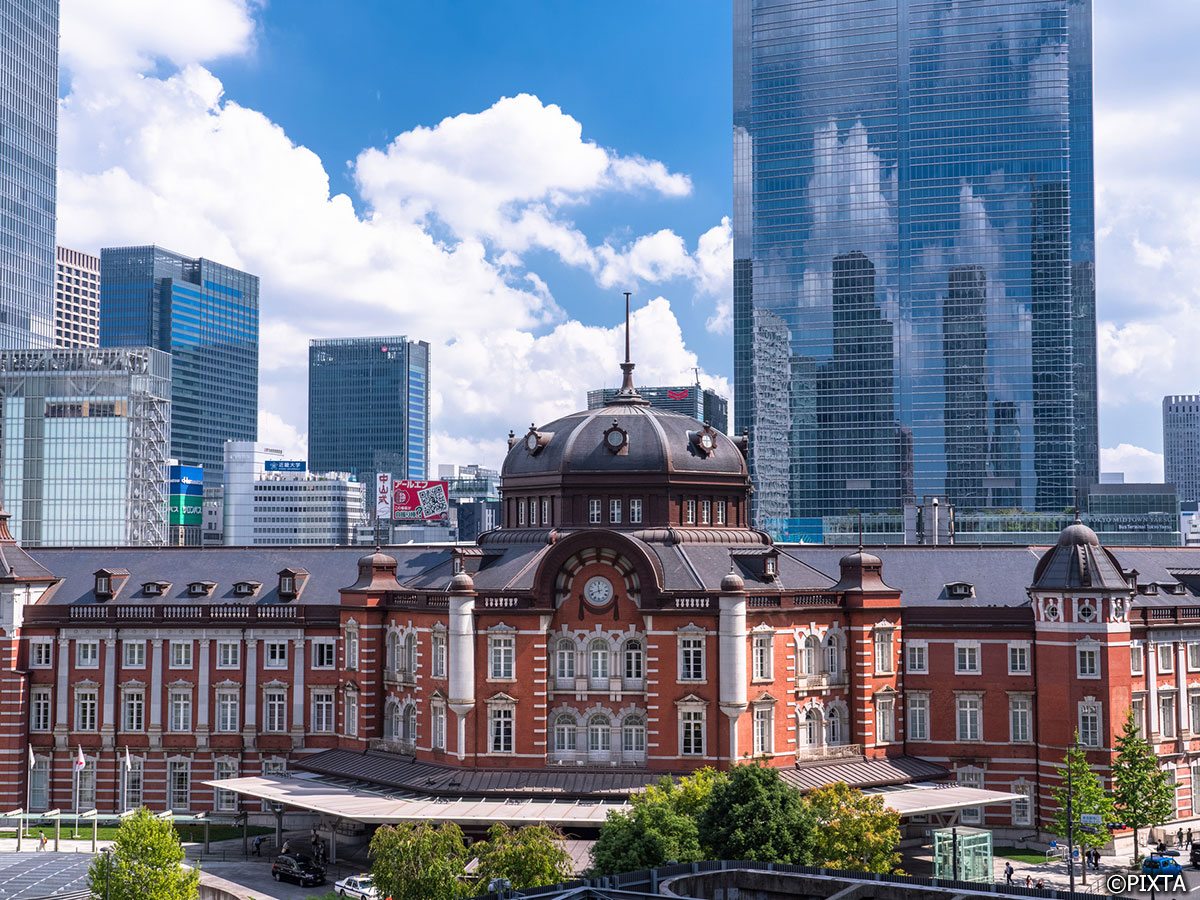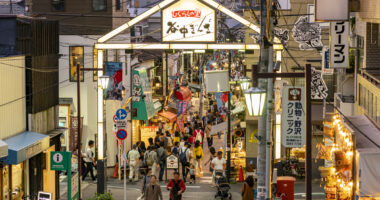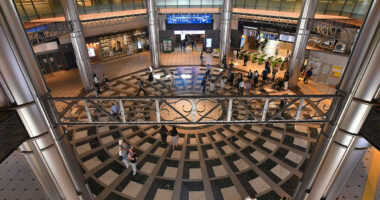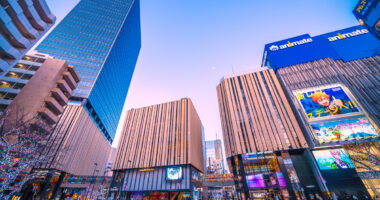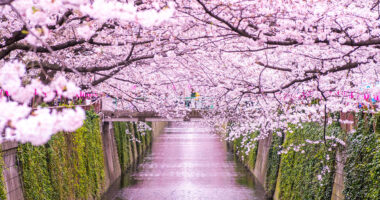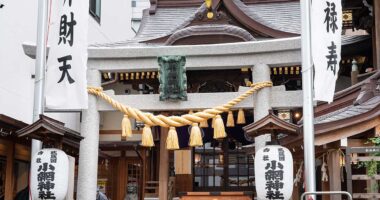Located at 1 Chiyoda-ward, Tokyo, the Imperial Palace is the residence of the Emperor of Japan and was once the site of Edo Castle, the home of the shogun.
Today, a portion of the grounds is open to the public free of charge, allowing anyone to visit and explore.
Entering the East Gardens of the Imperial Palace from the nearest gate
The East Gardens of the Imperial Palace span approximately 210,000 square meters, offering expansive landscaped grounds.
There are multiple entrances, but for visitors coming from Tokyo Station, Marunouchi, or Otemachi, the Ōte-mon Gate provides the most convenient access.
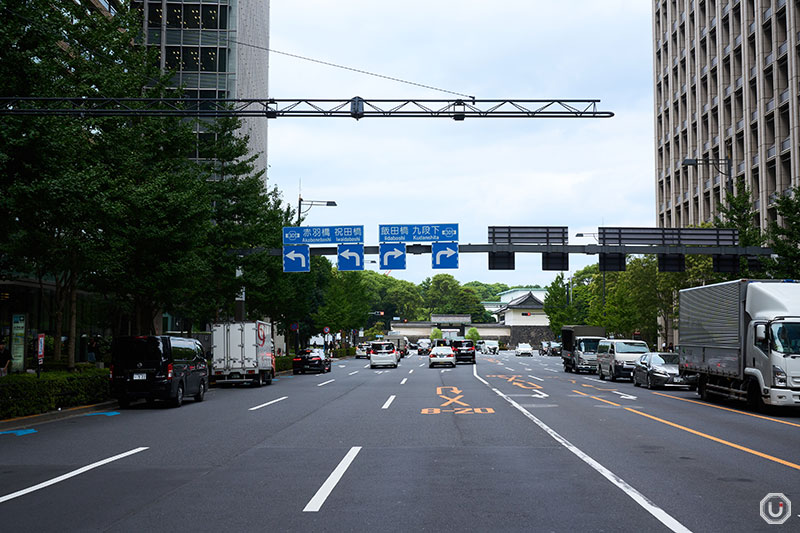
The Ote-mon Gate viewed from the Ōtemachi area
Admission is free, but bags are checked at the entrance. To ensure a smooth entry, it’s a good idea to be prepared beforehand.
The Ote-mon Gate serves as the main gate of the castle and features a distinctive style called a yagura-mon, where a building is constructed above the gate for defensive purposes.
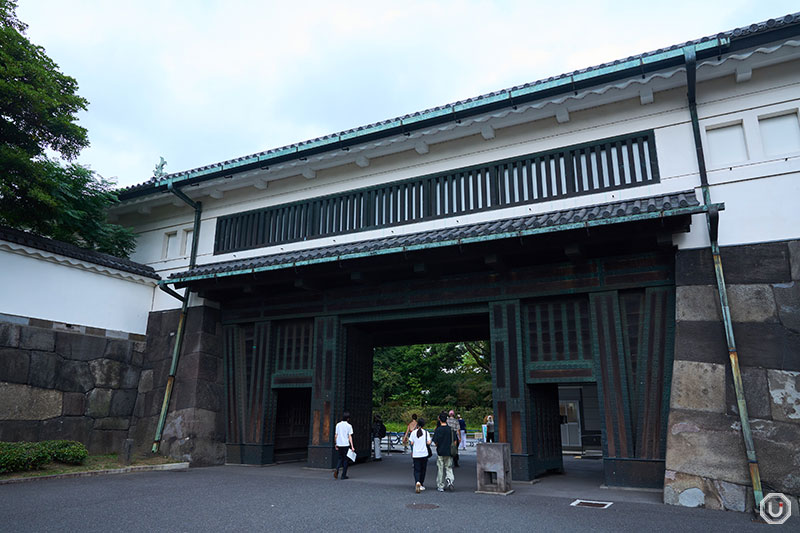
Yagura-mon
One thing to note when entering is that there are no trash cans on the grounds, except for those for empty bottles next to vending machines.
There are also no coin lockers or baggage storage facilities, so it’s recommended to leave large items at your accommodation or in lockers at Otemachi or Tokyo Station before visiting.
Several restrooms are located mainly near the gates. It’s a good idea to use them before walking around the expansive grounds.
Immediately after entering Ote-mon Gate, you’ll find an information board. By scanning the QR code, an illustrated map of the East Gardens of the Imperial Palace will appear on your smartphone.
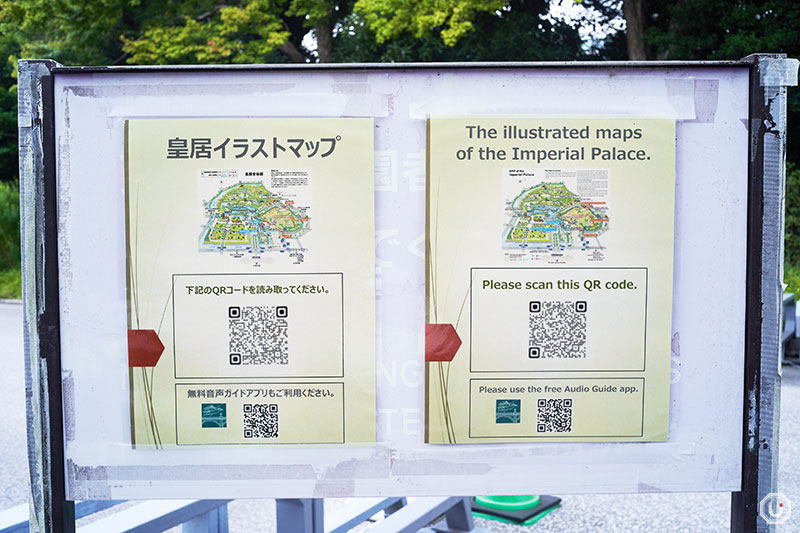
Information board with QR code for illustrated map
Additionally, the two shops within the gardens distribute paper pamphlets. They are available in Japanese, English, Korean, and Chinese, making it convenient for visitors who want to explore with a map in hand.
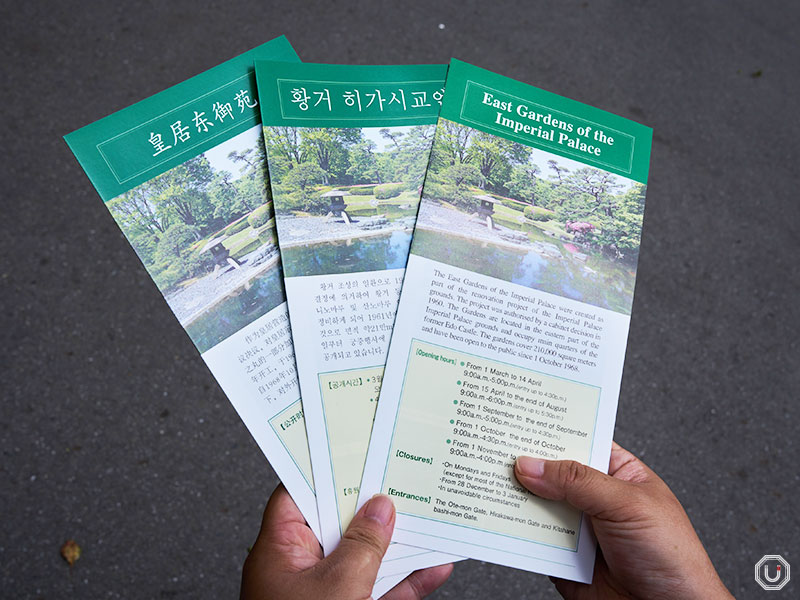
Paper pamphlets available in Japanese, English, Korean, and Chinese
Stroll through lush nature and expansive grounds
The East Gardens of the Imperial Palace are part of the former Edo Castle’s Honmaru, Ninomaru, and Sannomaru areas, maintained as the “Imperial Palace Attached Gardens” and open to the public since 1968.
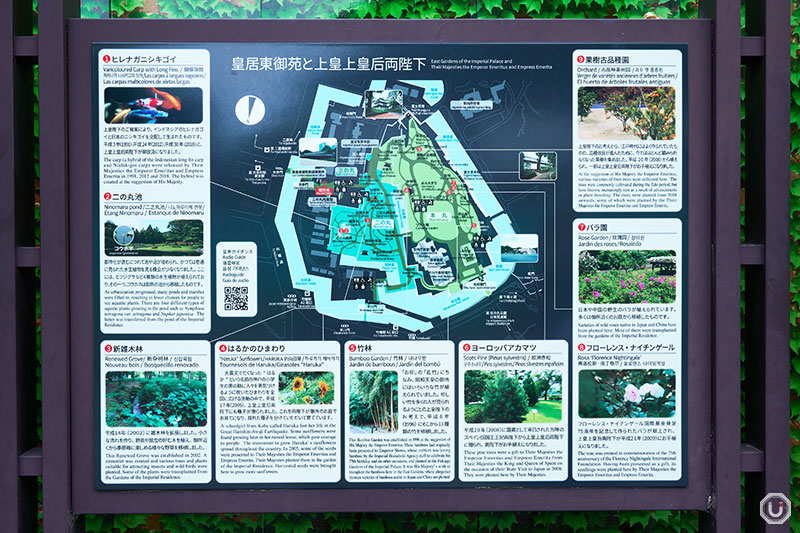
The gardens are filled with rich natural scenery, making it hard to believe you are in central Tokyo.
Information boards placed throughout the grounds provide detailed explanations of plants in season and points of interest, serving as useful guides for your stroll.
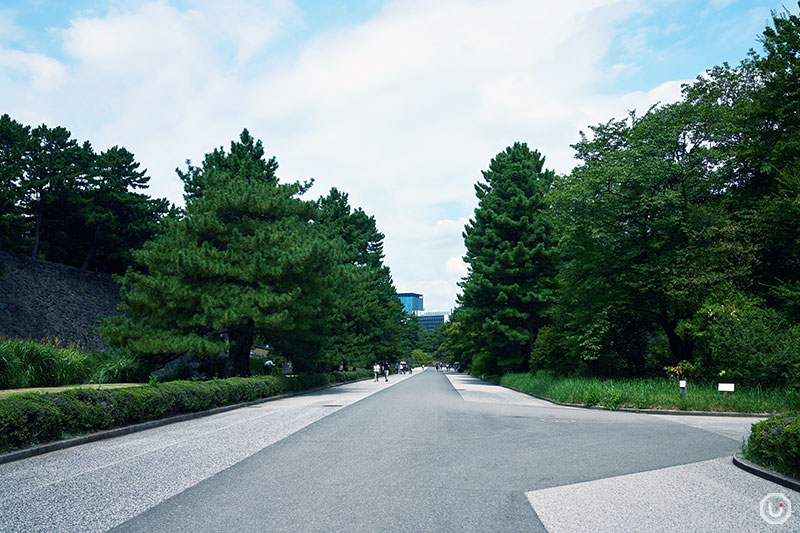
The total area of the grounds is approximately 210,000 square meters. Walking along the spacious paths, it’s easy to forget that the bustling Otemachi business district is just next door.
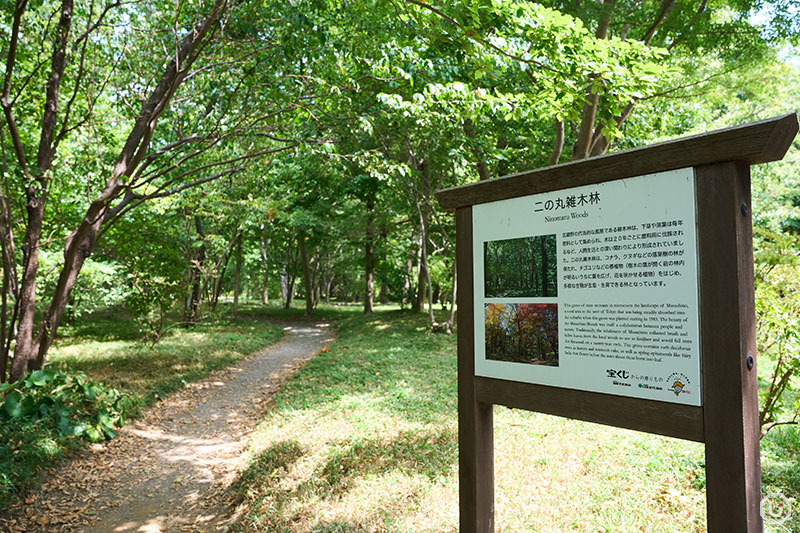
Ninomaru Woods
While much of the area has been developed as landscaped gardens, you can also enjoy naturalistic vegetation, such as in the Ninomaru Woods
This area was developed under the initiative of Emperor Showa to recreate a Musashino-style woodland. It offers a rustic natural experience distinct from the formal gardens.
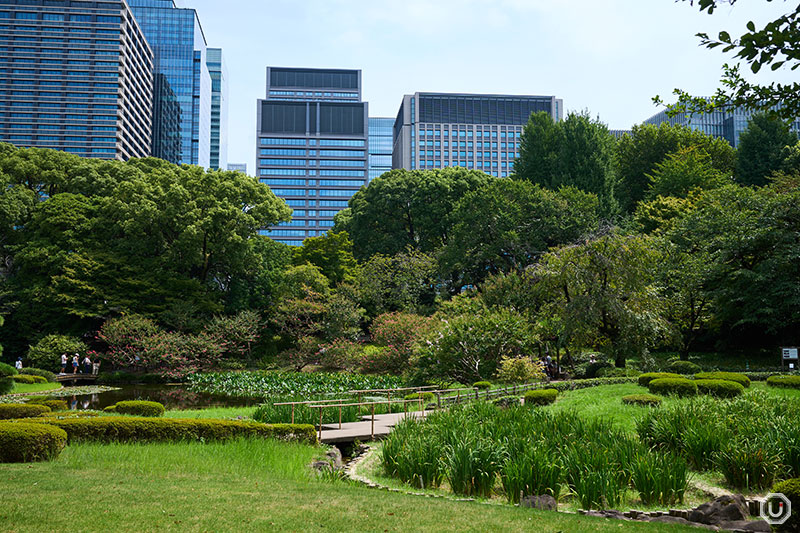
Ninomaru Garden
A highlight is the Ninomaru Garden, a Japanese garden reconstructed based on Edo-period garden plans from the era of the ninth shogun, Tokugawa Ieshige.
Centered around a pond, this chisen kaiyū-shiki style strolling garden features waterfalls, bridges, and koi swimming in the pond, providing a feast for the eyes.
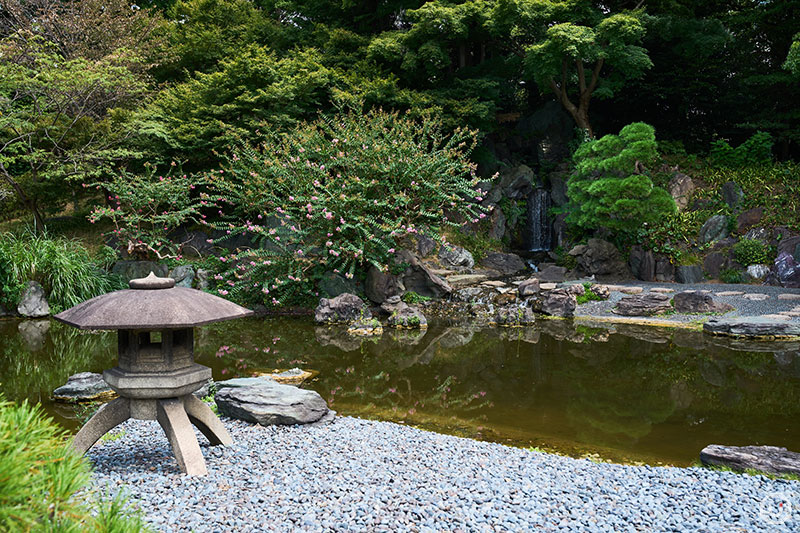
The reflection of the trees on the pond adds to the garden’s charm, offering a different ambiance with each season.
Throughout the grounds, buildings that preserve the atmosphere of the Edo period can also be found.
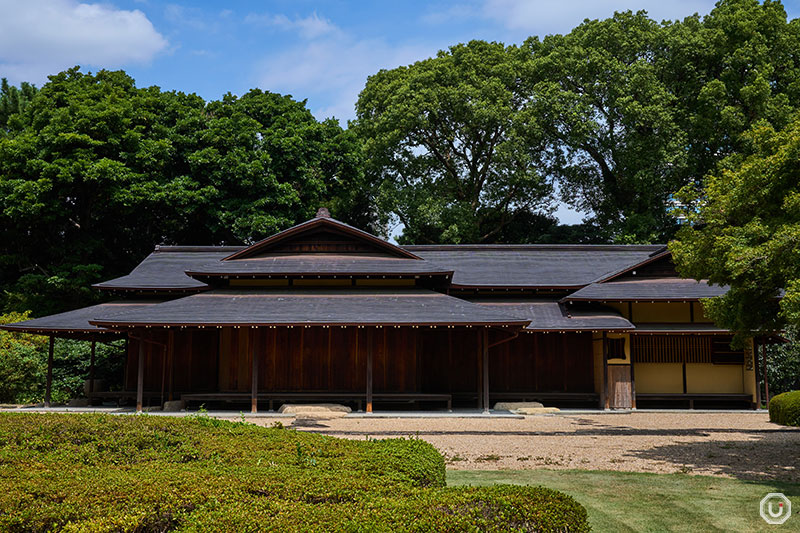
Suwa Chaya Tea House
One such building is the Suwa Chaya Tea House.
Situated within the Ninomaru Garden, this structure was originally located elsewhere and relocated during the 1968 renovations. It was rebuilt in 1912 by order of Emperor Meiji.
Feel the scale of Edo Castle while exploring its grounds
The grounds of the Imperial Palace were originally the site of Edo Castle, and traces of its history can still be seen throughout.
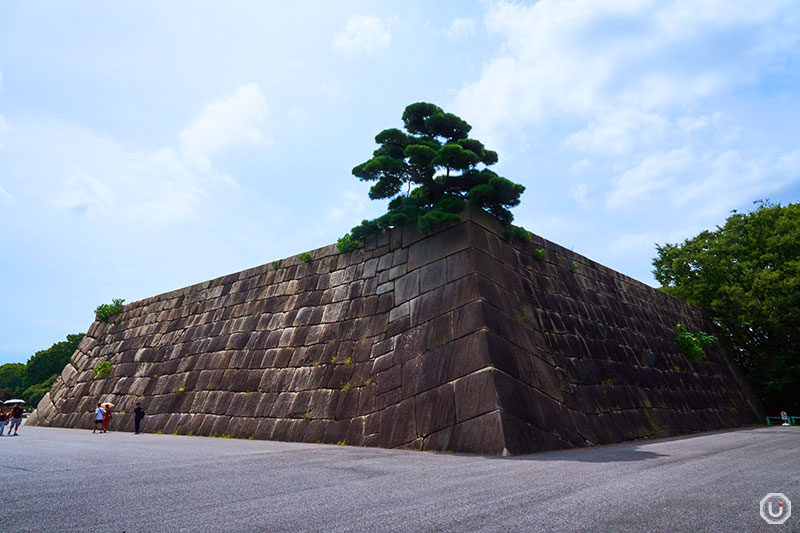
Tenshudai, Base of Edo Castle Keep
However, it is difficult to grasp the full scale of the castle from outside the grounds. The true sense of its size and history comes from passing through the gates and walking within.
The tenshukaku (main keep) at the center of Edo Castle was built three times in the past, but it was destroyed in the Great Meireki Fire of 1657 and never rebuilt.
Today, only the tenshudai (described as “Base of Edo Castle Keep”)—in other words, the foundation where the main keep once stood—remains.
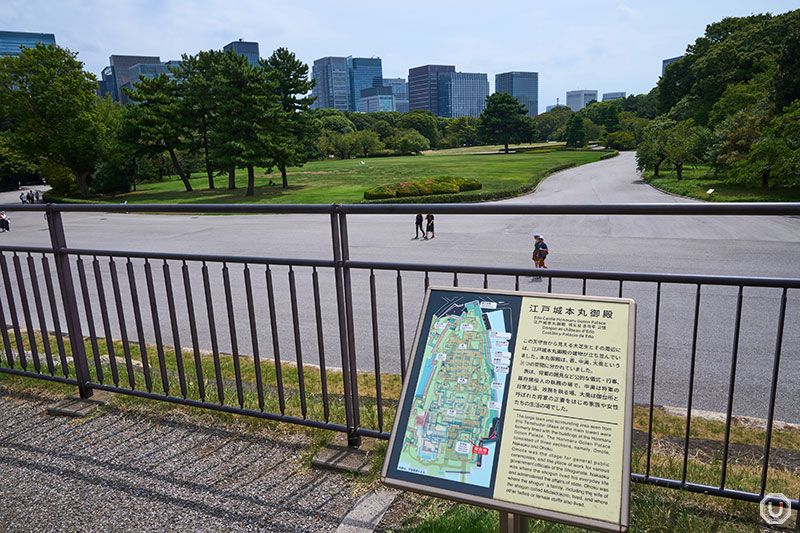
Along the path leading to the tenshudai, informational panels explain the structure of Edo Castle. Combined with the expansive Ōshibafu (Great Lawn) in front of you, they give a real sense of the castle’s original scale.
The top of the tenshudai has been developed as a small rest area with benches, making it a perfect spot to take a break during your walk.
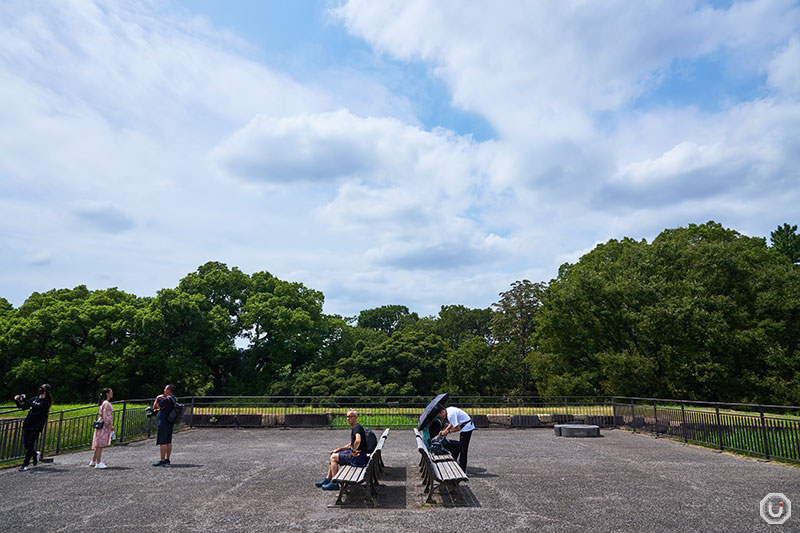
Nearby is the Tōkagakudō Concert Hall, a music hall built in 1966 to commemorate the 60th birthday of Empress Kōjun (wife of Emperor Showa), known for her love of music. The octagonal exterior and beautiful wall decorations make it an impressive building.
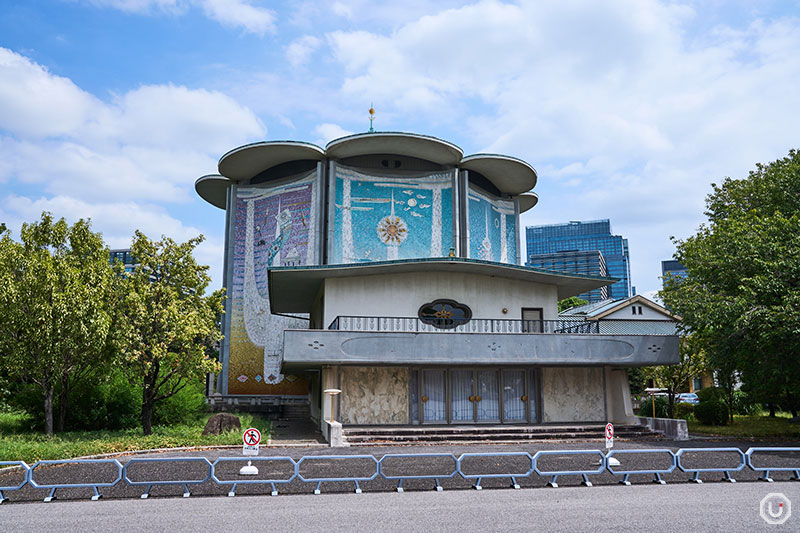
Tokagakudo Concert Hall
To the southwest, the Fujimi Tamon Defense House rises, said to be the oldest surviving structure in the area.
The stone base of this turret is believed to have been built by the master castle architect Kato Kiyomasa, showcasing the advanced stonework techniques of the period.
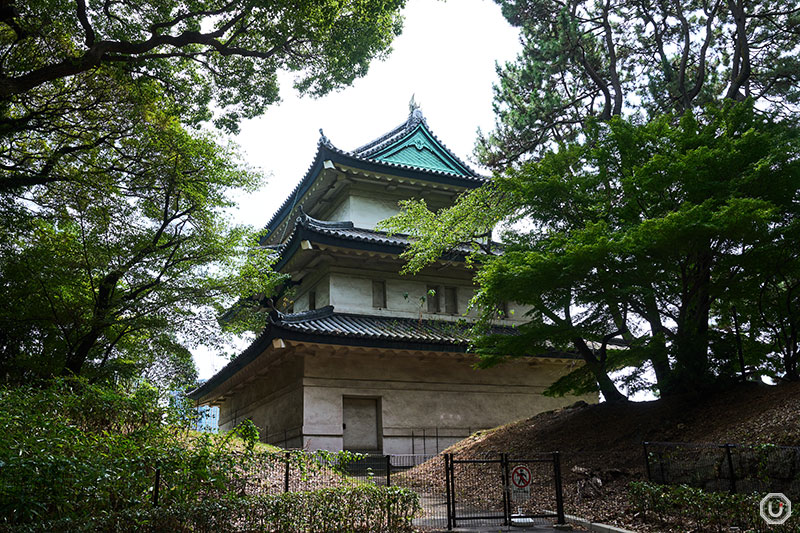
‘Fujimi Tamon Defense House
As the name suggests in Japanese (“Fujimi Yagura,” fujimi meaning “view of Mt. Fuji”), it was once possible to view the famous mountain from this defensive structure.
During the era when there was no tenshu (main keep), the shogun is said to have watched the sea at Shinagawa or fireworks at Ryōgoku from here.
Next to the Honmaru Resting Area (The Exhibition of Edo Castle), a restored model of Edo Castle’s main keep is on display.
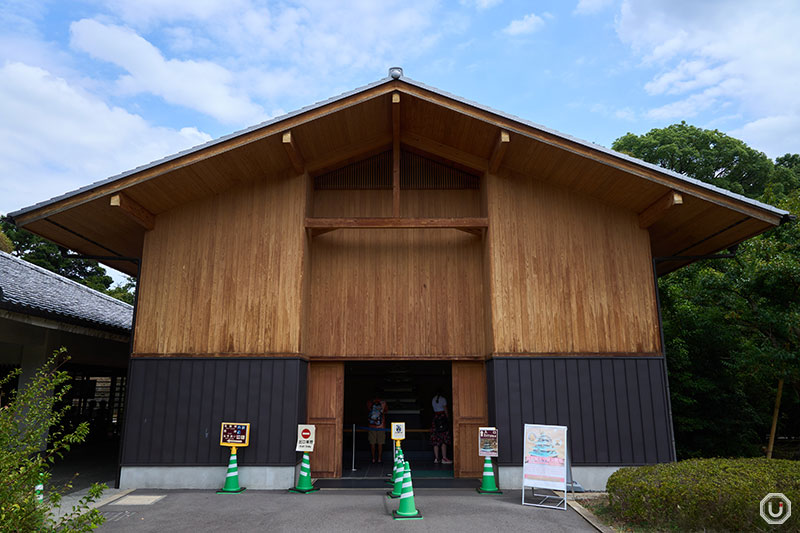
Exterior of the facility displaying the restored model of Edo Castle Tenshu
This model was created in 2020 based on detailed Edo Castle construction records and made publicly available, providing a valuable opportunity to study the castle’s original appearance.
The exhibition facility can be visited from 9:00 AM on days the East Gardens are open until 30 minutes before closing (last entry is 45 minutes before closing).
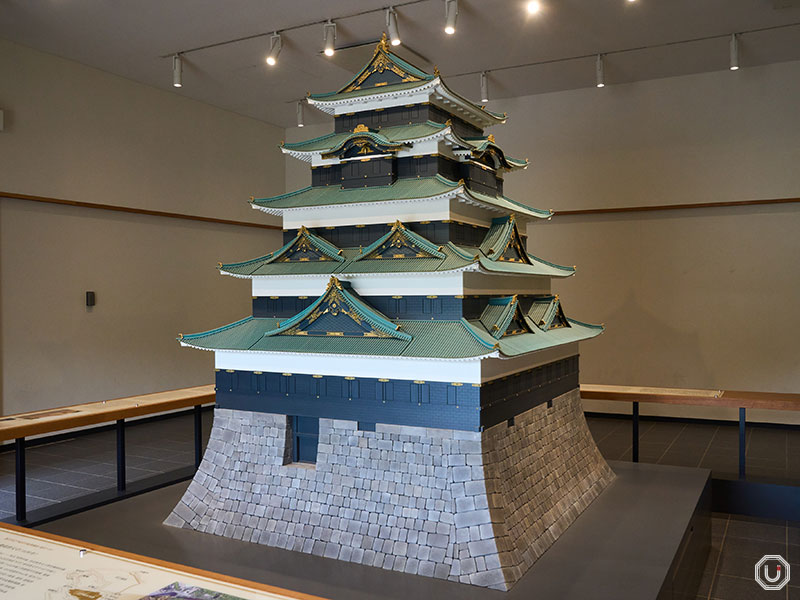
Restored model of Edo Castle main keep
Be sure not to miss the shops within the gardens. In addition to postcards and bookmarks, they also sell unique souvenirs such as genuine leather wallets featuring the chrysanthemum crest.
The reasonable prices make them especially appealing, and they are popular merchandise among those in the know.
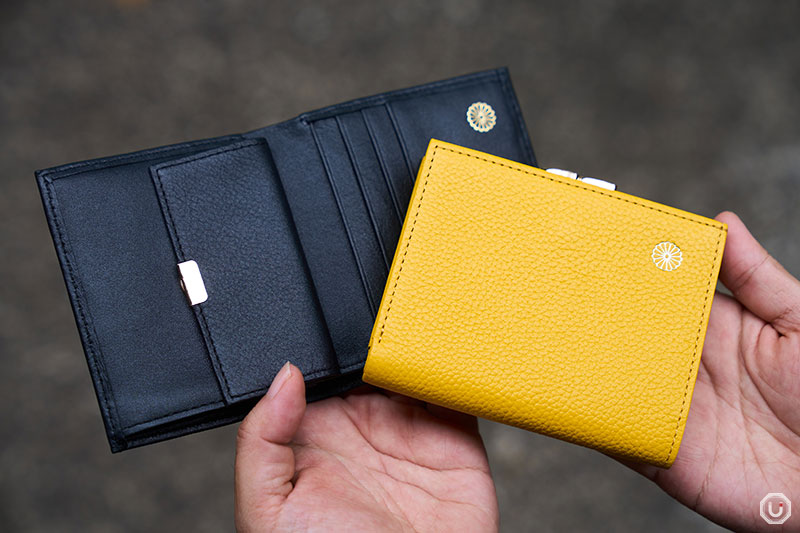
(Left) “皇居財布(二つ折り),” Imperial Palace Wallet (bi-fold) 2,500 JPY (tax included) (Right) “皇居財布(がま口),” Imperial Palace Wallet (purse-style) 4,500 JPY (tax included)
Additionally, guided tours are held twice a week by the Kikuyō Cultural Association.
English-language tours are also available, so it’s recommended to check the official website for details.
Located in the heart of Tokyo, yet offering rich nature and a sense of history, the East Gardens of the Imperial Palace is a spot well worth visiting on your next trip to Tokyo.
Information
| Facility name | 皇居東御苑 East Gardens of the Imperial Palace |
|---|---|
| Address | 1-1 Chiyoda, Chiyoda-ku, Tokyo
|
| Access |
Ōtemachi Station 5-minute walk from Exit C13a
Nijubashimae Station 10-minute walk from Exit 6
Tokyo Station(TYO) 15-minute walk from Tokyo Station Marunouchi Exit
|
| Phone number | 03-3213-2050 |
| Hours | March 1-April 14, 9:00-17:00(last entry 30 minutes before closing) Aril 15-August 31 9:00-18:00(last entry 30 minutes before closing) September 1-September 30 19:00-17:00(last entry 30 minutes before closing) October 1-October 31 9:00-16:30(last entry 30 minutes before closing) November 1-end of February 9:00-16:00(last entry 30 minutes before closing) |
| Closed | Mondays and Fridays (except the Emperor’s Birthday; if a holiday falls on these days, the garden will be open, and the following weekday will be closed) |
| Admission | Free |
| Official website | https://www.kunaicho.go.jp/event/higashigyoen/higashigyoen.html |
| Other information |
|
※The information in this article is current as of September 2025.
